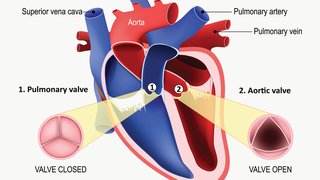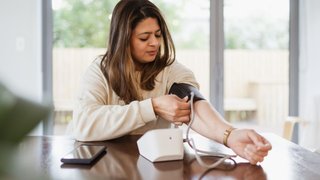
Do you take your blood pressure at home rather than waiting for the doctor to do so at your next visit?
My colleagues and I recently completed a study supporting the idea that taking blood pressure readings at home as well as at the doctor’s office could be beneficial. It might even help your physician identify problems such as risk of heart attack and stroke, initial signs of organ damage, and vascular disease.
Why does it matter where you take your blood pressure?
Taking at-home blood pressure readings might help identify a phenomenon called “white coat hypertension,” in which a patient’s blood pressure readings are higher in a physician’s office than they are when taken at home. Higher blood pressure readings at the physician’s office could result from a patient feeling nervous while there, from having climbed stairs to get to the office, or perhaps from experiencing anxiety about running late for the appointment.
Home blood pressure monitoring might also reveal the opposite effect – a second, lesser known phenomenon called “masked hypertension” – in which blood pressure readings are higher at home than in a medical setting. Reasons for this might include tension in the household, a patient smoking or engaging in other activities that raise blood pressure, or because the patient doesn’t take blood pressure medication regularly except before an appointment.
When blood pressure is measured in the clinic, anything above 140/90 is hypertension. However, when blood pressure is measured at home or away from the doctor’s office, anything above 135/85 is considered to be high because people are typically more relaxed outside a medical facility.
Finding more at-risk hypertension patients
Our study compared rates of heart attacks, heart failure, strokes, and other cardiovascular health events among four groups:
- People with consistently normal blood pressures
- People with white coat hypertension
- People with masked hypertension
- People with consistently high blood pressures
Our results showed that individuals with consistently normal blood pressures had the lowest rate of heart attack and stroke. People with either white coat hypertension or masked hypertension had higher rates of heart and vascular problems. Those who had consistently high blood pressure numbers had the highest rates of heart attack and stroke.
The findings have important implications and suggest that when we monitor blood pressure only in the physician’s office, it may not tell the full story about blood pressure and blood pressure control.
At-home blood pressure monitoring could identify individuals at risk for long-term effects of hypertension who would have been missed if only the clinic blood pressure reading were considered. The percentage of masked hypertension in our study population was 18 percent – far more prevalent than the 3 percent identified with white coat hypertension. This finding suggests that there may be many adults with undetected high blood pressure because it’s measured solely in a medical setting. These people may be under-treated or not treated at all for their hypertension.
Previous studies in Japan and Europe have shown a similar link between white coat hypertension and cardiovascular complications. Our study was the first direct evidence of organ damage and increased cardiovascular problems in a U.S. population.
Ask your physician about taking your blood pressure at home. He or she can show you how to take blood pressure properly and suggest appropriate times for taking blood pressure readings so you’ll have reliable data.
Interested in the latest heart health news? Sign up for our blog alert – we publish new One Heart articles every Monday.










